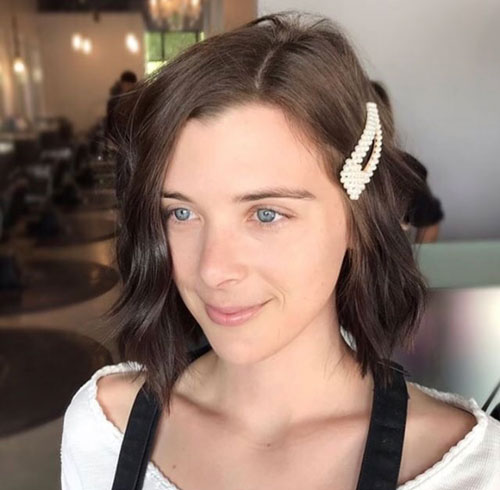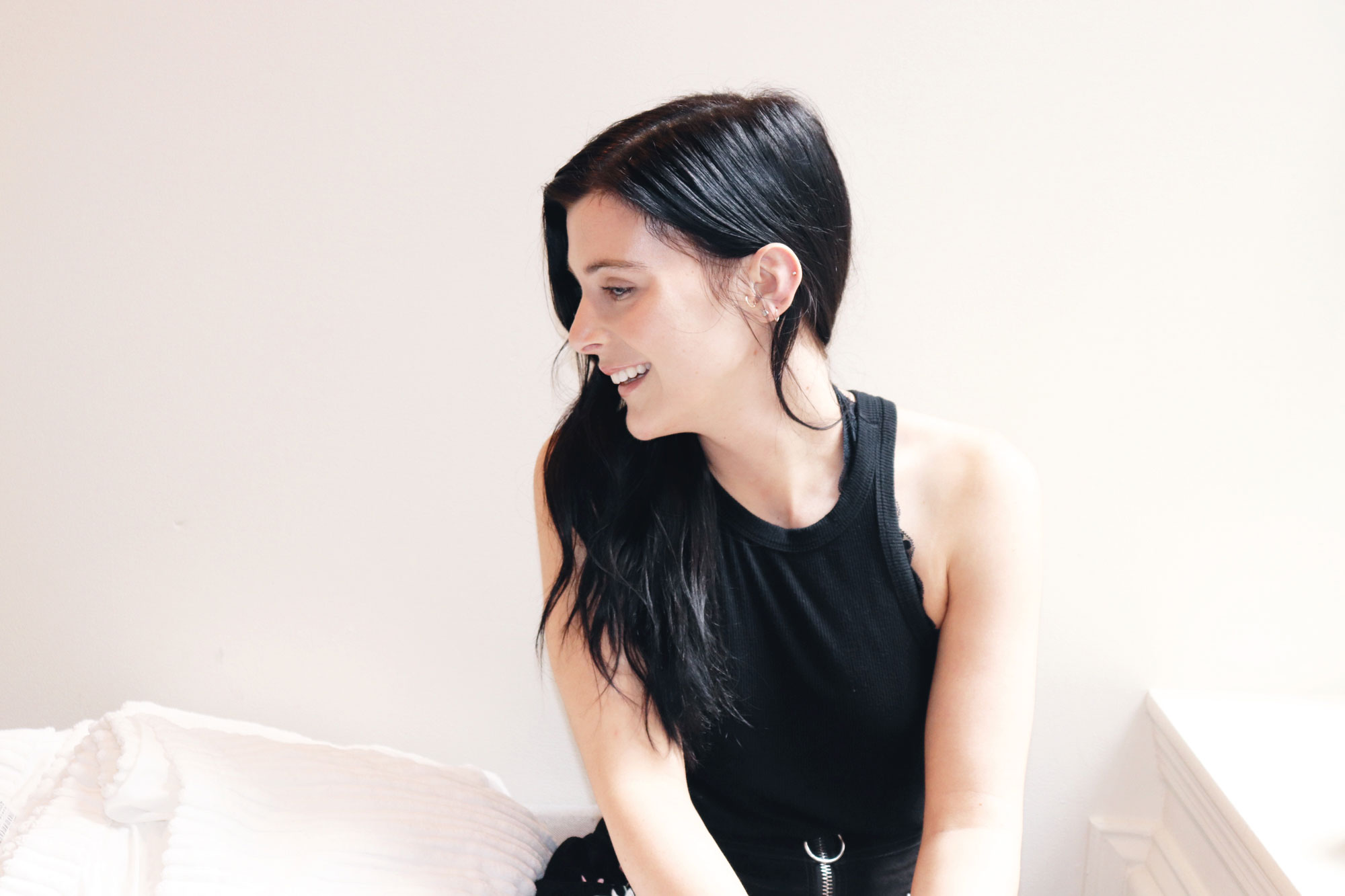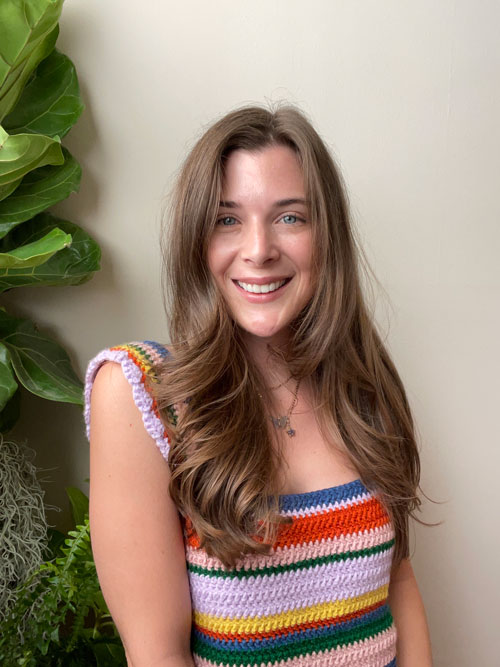While fall beauty trends are giving us 3-D nail art and a reboot of Y2K rhinestoned hairstyles, they’re also inviting us to return to our roots — literally — by embracing our natural hair color. With fuss-free hair coloring techniques like balayage and root grow-out becoming increasingly popular over the last decade, it was only a matter of time before we stripped it all off and returned to our natural selves.
Four years ago, I decided to grow out my natural hair color. And, while I’d like to say that I was ahead of the trend, I was just getting sick of going to the salon every month to have my mousy brown roots slathered in black hair dye. So, what began as a quest for low-maintenance color quickly became a deeply personal experience that forced me to uproot (pun intended) my identity and explore what I was hiding underneath that dark dye.
Hair Color and Identity 
Before growing out my natural hair, I had artificially colored my hair in some capacity for as long as I could remember. In 6th grade, it was very faint highlights that I begged my mom for (despite already having natural blonde pieces from my sunny California childhood). And, in junior high school, that turned into a full-bottle blonde moment, with a short period of chocolate brown tucked somewhere in between. By the time I started high school, I was back to my blonde self and adamant about that 4-6 week root touch-up.
In my blonde phase, I was captain of the cheerleading squad and friends with just about anyone and everyone at school. I pretended to be that quintessential California teenage girl you see in the movies, even if I didn’t feel like it on the inside. It wasn’t until 11th grade — when I quit cheer and followed my more artistic passions by joining my school’s video production team — that I transitioned away from the bleach and entered my black hair dye phase, which began as a dare from my childhood best friend (who clearly knew me so well) and lasted for 11 years.
Despite my fair skin and light blue eyes, dark hair suited me. I loved how it contrasted my complexion and added a sense of mystery to my typically open-book and talkative personality type. I also felt like myself with black hair; in the confusion of my late teens and early-mid twenties, that was something major. On top of that, others noticed what I liked about my dark hair and would compliment me about it all the time (especially how it made my eyes pop). I didn’t realize the effect this had on me at the time. However, I now see how I so easily felt seen, validated, and worthy through those compliments, causing me to ground myself in my dark hair identity further.
How we style our hair is one of the most significant aspects of self-expression.
“At the intersection of identity and mental health is an uncommon connection known as hair,” says Djuan Short, LCSW, CTCP, C-IYAT. “Hair is one of the most transformational aspects of a person’s body that is connected to them 24/7,” she adds, noting that how we style our hair is one of the most significant aspects of self-expression.
Growing Out Natural Hair Color
Growing out your natural hair color is not easy. And, if you have attachments to your hair, as I did, it can be an emotional and patience-testing process. I liken it to growing out a short haircut or bangs; only it can take three times as long.
When I first decided to grow out my natural hair, my strands were super dark with layers of both box and professional hair dye. Because of that, my hairdresser warned against lightening up my hair to match my natural hair color and instead added a lighter and less permanent brown dye to just my grown-out roots. Since my hair is naturally light brown and the black dye was super contrasting against my grow-out, this helped ease me into the process. According to Kim Gueldner, a celebrity hairstylist who works with Amy Schumer, Katy Perry, Gwen Stefani, and more, this technique “helps blend the outgrowth more so you don’t have to look at a harsh regrowth line.”
I continued to touch up my roots in this fashion for a few months, plus I trimmed my hair to help get rid of the black dye (and dead ends). Then, about three months into the process, I stopped touching up my roots. And about three months after that, my hairdresser suggested I do a big chop. As someone who has had long hair for most of their life, I was not into it and began to experience a mini identity crisis over the matter. However, the contrast between light and dark brown on my strands was getting increasingly noticeable, and, to be completely transparent, it was ugly (or, at least, that is how I felt when looking in the mirror).

I hated my hair during the grow-out process. All I wanted to do was dye it dark and accept the high-maintenance upkeep. But, I reminded myself of all the hard work I had already put in to return to my natural color. And, even if I couldn’t stand looking at my strands in the mirror, the grow-out experience helped me shed many of my attachments to my hair and identity.
Since I hated the way my hair looked, I was able to start disconnecting from it and approach chopping my strands in a “nothing to lose” manner. And, when I did finally chop my strands off, I loved the bob cut. This was mostly because it relieved me of so much of the dark hair that was weighing me down, but also because it was something fun and different, and, as I had recently come to realize throughout the process, it was just hair. Plus, chopping my hair allowed me to see my progress and that I only had a few more inches to chop off before my hair was dye-free, which was very rewarding.
After the final chop, I was left with the light brown hair of my childhood. This moment felt symbolic — not just because it had taken almost two years to get there, but because I was also working with my therapist to heal my inner child, and now there she was, staring back at me. For over a decade, I used black hair dye to express my personal style and cover up and protect myself. That dark hair had become so intertwined with my identity that I didn’t realize I was using it to mask my inner light. In many ways, it was like a shield, protecting me from my authentic self.
Meet the Experts
Djuan Short, LCSW, CTCP, C-IYAT is a certified therapist.
Kim Gueldner is a celebrity hairstylist.
We only recommend products we have independently researched, tested, and loved. If you purchase a product found through our links, Sunday Edit may earn an affiliate commission.








